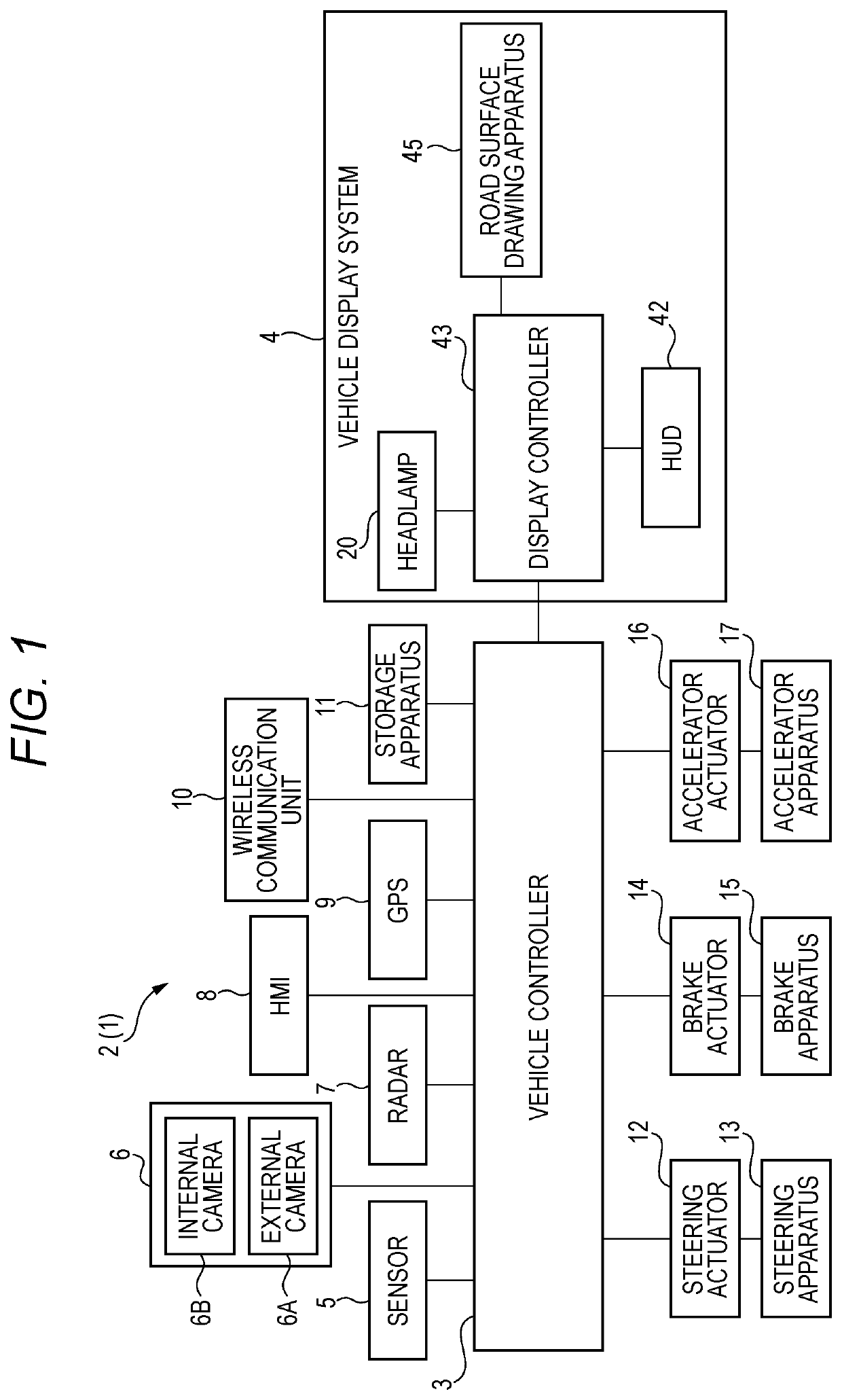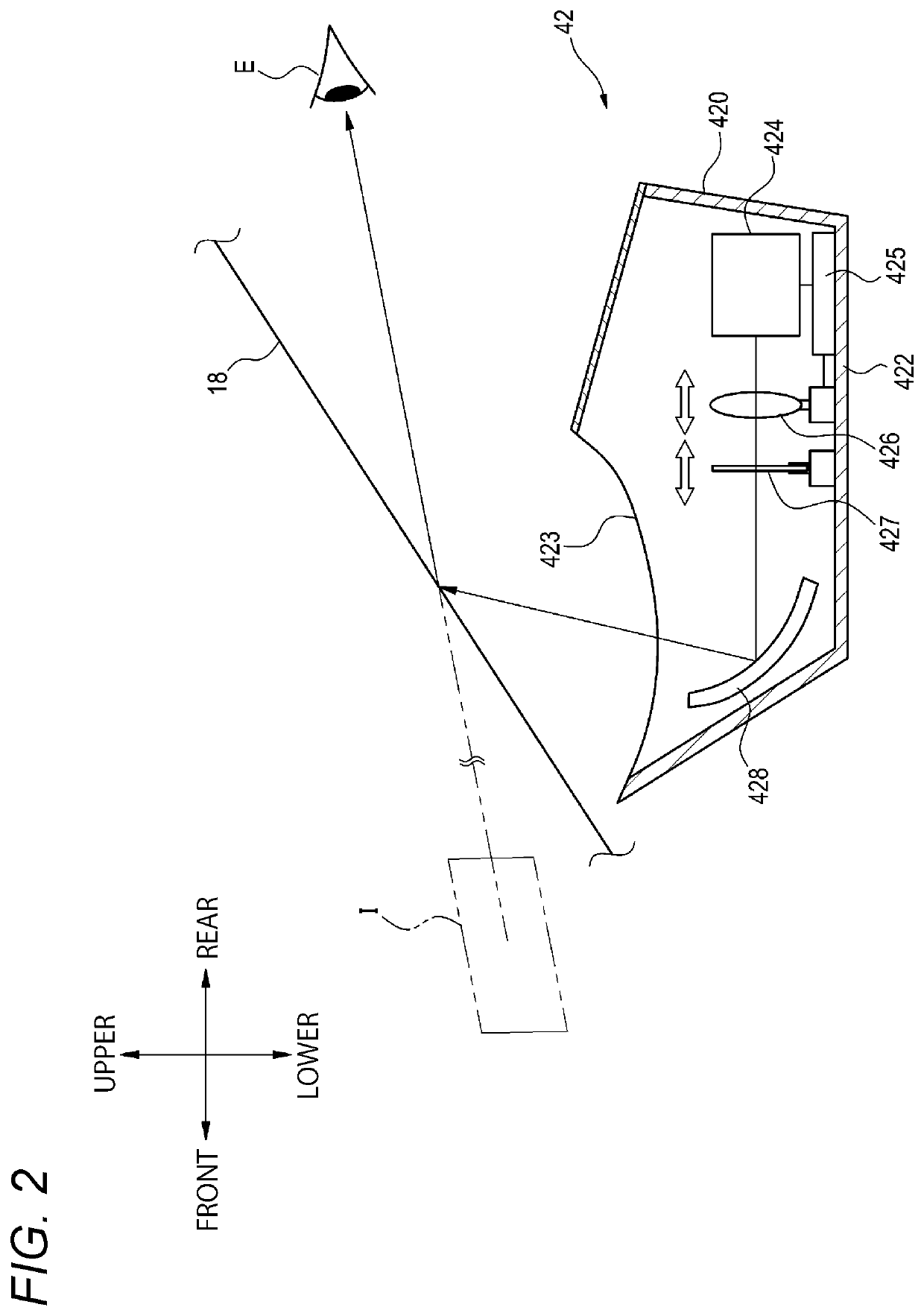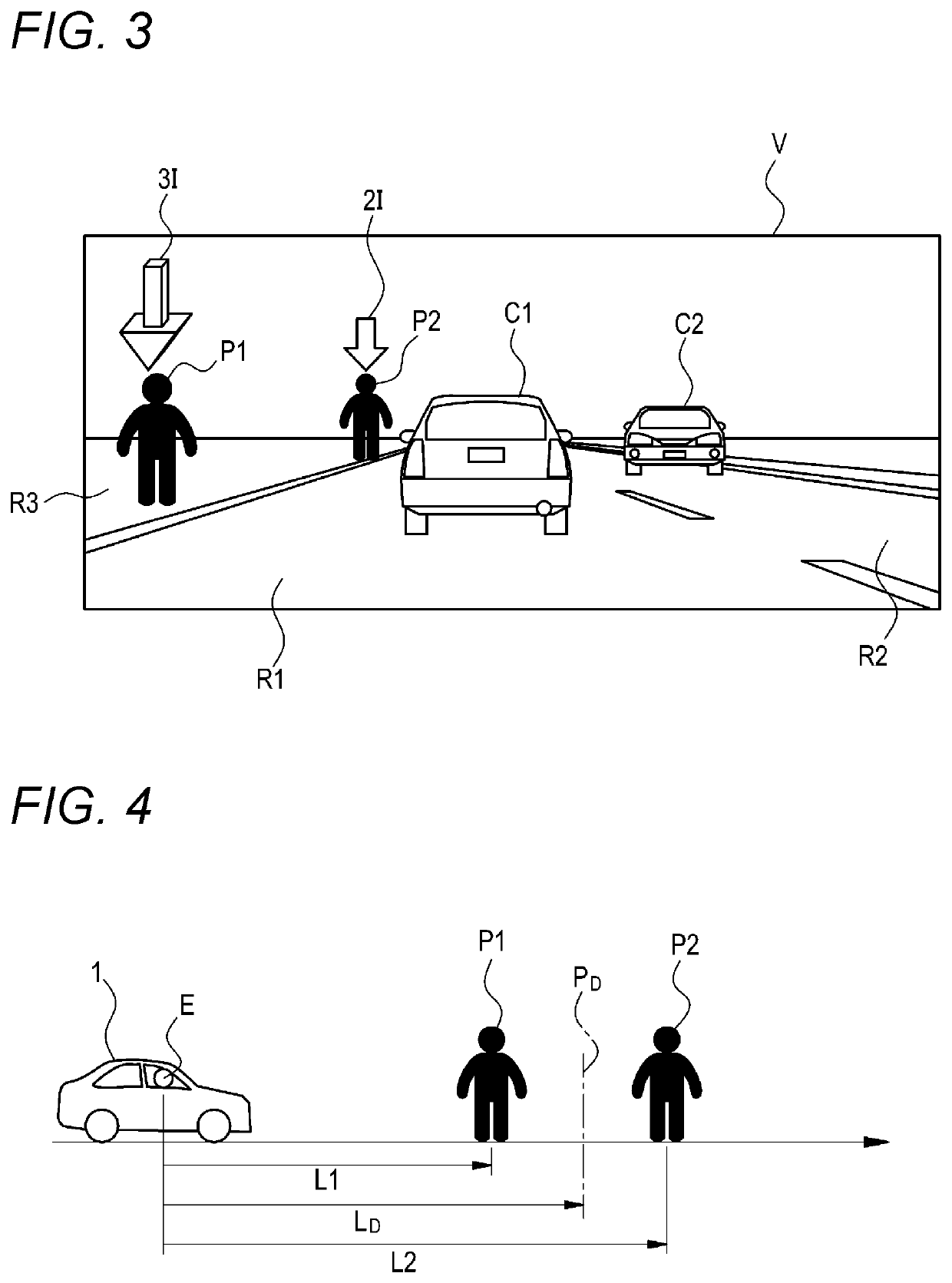Head-up display, vehicle display system, and vehicle display method
a head-up display and vehicle technology, applied in static indicating devices, instruments, navigation instruments, etc., can solve problems such as increased cost, heat damage to display devices, and inconvenience of image display, so as to reduce discomfort, improve usability, and suppress processing load
- Summary
- Abstract
- Description
- Claims
- Application Information
AI Technical Summary
Benefits of technology
Problems solved by technology
Method used
Image
Examples
first embodiment
[0187]Next, an example of control related to generation of a virtual image object using the HUD 42 according to a first embodiment will be described with reference to FIGS. 3 to 7.
first example
[0188]FIG. 3 is a diagram showing a state where virtual image objects are projected onto a field-of-view region V of the occupant by the HUD 42 in a first example of the first embodiment. FIG. 4 is a schematic diagram showing a relationship between a distance from the viewpoint E to the target object and a threshold.
[0189]In the example shown in FIG. 3, a preceding vehicle C1 that travels in a traveling lane (own vehicle lane) R1 in which the vehicle 1 travels and an oncoming vehicle C2 that travels in an oncoming lane R2 exist in the field-of-view region V of the occupant. Further, pedestrians P1 and P2 exist on a sidewalk R3 on a left side of the traveling lane R1.
[0190]In such a situation, the HUD controller 425 of the HUD 42 controls the image generation unit 424 to generate an image for displaying the virtual image objects in the field-of-view region V in association with positions of the pedestrians P1 and P2 in order to alert the occupant of the vehicle 1 about existence of t...
second example
[0196]FIG. 5 is a diagram showing a state where the virtual image objects are projected onto the field-of-view region V of the occupant by the HUD 42 in a second example of the first embodiment.
[0197]In the example shown in FIG. 5, in the field-of-view region V of the occupant, an obstacle M1 exists on the traveling lane R1 in which the vehicle 1 travels, and an obstacle M2 exists on the oncoming lane R2. Further, a pedestrian P3 exists on the sidewalk R3 on the left side of the traveling lane R1 and a pedestrian P4 exists on the oncoming lane R2.
[0198]In such a situation, the HUD controller 425 may switch a display mode of a virtual image object according to an attribute of each target object regardless of a distance from the viewpoint E to the target object. The attribute of each target object is, for example, importance of each target object. The importance of the target object is, for example, a level of urgency for alerting the occupant of the vehicle 1 to danger. In this examp...
PUM
 Login to View More
Login to View More Abstract
Description
Claims
Application Information
 Login to View More
Login to View More - R&D
- Intellectual Property
- Life Sciences
- Materials
- Tech Scout
- Unparalleled Data Quality
- Higher Quality Content
- 60% Fewer Hallucinations
Browse by: Latest US Patents, China's latest patents, Technical Efficacy Thesaurus, Application Domain, Technology Topic, Popular Technical Reports.
© 2025 PatSnap. All rights reserved.Legal|Privacy policy|Modern Slavery Act Transparency Statement|Sitemap|About US| Contact US: help@patsnap.com



